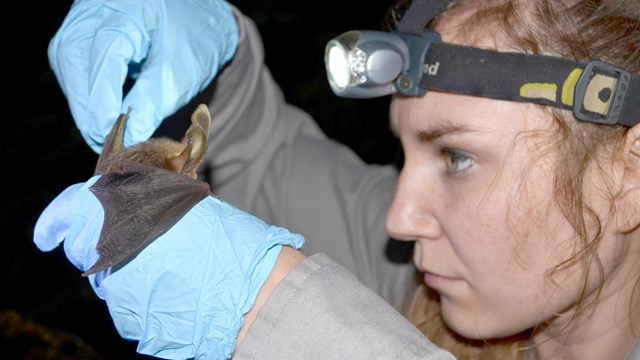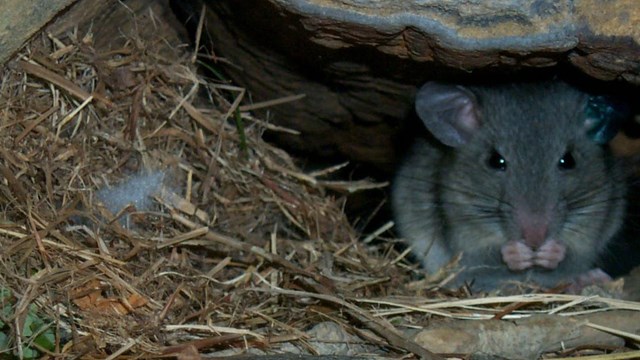Approximately 65 species of mammals are known to occur in the New River Gorge area. Common mammals include groundhog, raccoon, opossum, gray and fox squirrel, chipmunk, and white-tailed deer. Beaver, mink, and an occasional river otter may sometimes be seen along the river. Black bears and bobcats are reclusive and mostly nocturnal. Coyotes and red and gray foxes may also be seen here.
The diverse forest and river ecosystems protected at New River Gorge provide critical habitat for a number of threatened and endangered species. The park contains relatively stable and healthy populations of Allegheny woodrats, a species of special concern in West Virginia. The woodrat population in West Virginia may represent the core population for this species in the eastern United States. Due to this species' decline throughout the east, the woodrat populations at New River Gorge are critical from a conservation perspective.
Ten species of bats have been documented in the park, including two federally endangered species (Virginia big-eared bat and Indiana bat) and one state rare species (eastern small-footed myotis). Abandoned mine portals throughout the park provide habitat for roosting and hibernating. Protecting these historic mines not only preserves our cultural history, it also protects the critical habitat that bats need to survive.



